 W
WBreastfeeding, also known as nursing, is the feeding of babies and young children with milk from a woman's breast. Health professionals recommend that breastfeeding begin within the first hour of a baby's life and continue as often and as much as the baby wants. During the first few weeks of life babies may nurse roughly every two to three hours, and the duration of a feeding is usually ten to fifteen minutes on each breast. Older children feed less often. Mothers may pump milk so that it can be used later when breastfeeding is not possible. Breastfeeding has a number of benefits to both mother and baby, which infant formula lacks.
 W
WAttachment parenting (AP) is a parenting philosophy that proposes methods aiming to promote the attachment of parent and infant not only by maximal parental empathy and responsiveness but also by continuous bodily closeness and touch. The term attachment parenting was coined by the American pediatrician William Sears. There is no conclusive body of research that shows Sears’ approach to be superior to "mainstream parenting".
 W
WThe breast is one of two prominences located on the upper ventral region of the torso of primates. In females, it serves as the mammary gland, which produces and secretes milk to feed infants. Both females and males develop breasts from the same embryological tissues. At puberty, estrogens, in conjunction with growth hormone, cause breast development in female humans and to a much lesser extent in other primates. Breast development in other primate females generally only occurs with pregnancy.
 W
WBreast engorgement occurs in the mammary glands due to expansion and pressure exerted by the synthesis and storage of breast milk. It is also a main factor in altering the ability of the infant to latch-on. Engorgement changes the shape and curvature of the nipple region by making the breast inflexible, flat, hard, and swollen. The nipples on an engorged breast are flat or inverted. Sometimes it may lead to striae on nipples, mainly a preceding symptom of septation mastitis.
 W
WBreast milk or mother's milk is milk produced by mammary glands located in the breast of a human female to feed a young child. Breast milk is the primary source of nutrition for newborns before they are able to eat and digest other foods; older infants and toddlers may continue to be breastfed, but solid foods should be introduced in combination starting from six months of age.
 W
WA breast pump is a mechanical device that lactating women use to extract milk from their breasts. They may be manual devices powered by hand or foot movements or automatic devices powered by electricity.
 W
WBreast shells are hollow, lightweight plastic disks worn inside the brassiere to help correct flat or inverted nipples either in preparation for or during breastfeeding. Also known as milk cups, breast cups, breast shields, or Woolwich shields, they can also be used to ease sensitive nipples or collect milk when the baby has not finished the teat. Breast shells function by applying gentle but firm pressure to the region surrounding the nipple to stretch underlying adhesions and draw out the nipple. Nipple shields may be confused with breast shells, but shields are intended for use during the act of breastfeeding, whereas breast shells are worn in preparation for or after breastfeeding.
 W
WBreastfeeding and mental health is the relationship between postpartum breastfeeding and the mother's and child's mental health. Research indicates breastfeeding has positive effects on the mother's and child's mental health. These benefits include improved mood and stress levels in the mother, lower risk of postpartum depression, enhanced social emotional development in the child, stronger mother-child bonding and more. Given the benefits of breastfeeding, the World Health Organization (WHO), the European Commission for Public Health (ECPH) and the American Academy of Pediatrics (AAP) suggest exclusive breastfeeding for the first six months of life. Despite these suggestions, estimates indicate 70% of mothers breastfeed their child after birth and 13.5% of infants in the United States are exclusively breastfed. Breastfeeding promotion and support for mothers who are experiencing difficulties or early cessation in breastfeeding is considered a health priority.
 W
WContraindications to breastfeeding are those conditions that could compromise the health of the infant if breast milk from their mother is consumed. Examples include galactosemia, untreated HIV, untreated active tuberculosis, Human T-lymphotropic virus 1 or II, uses illicit drugs, or mothers undergoing chemotherapy or radiation treatment.
 W
WBreastfeeding difficulties refers to problems that arise from breastfeeding, the feeding of an infant or young child with milk from a woman's breasts. Although babies have a sucking reflex that enables them to suck and swallow milk, and human breast milk is usually the best source of nourishment for human infants, there are circumstances under which breastfeeding can be problematic, or even in rare instances, contraindicated.
 W
WThe social attitudes to and legal status of breastfeeding in public vary widely in cultures around the world. In many countries, both in the Global South and in a number of Western countries, breastfeeding babies in open view of the general public is common and generally not regarded as an issue. In many parts of the world including Australia, some parts of the United States and Europe, along with some countries in Asia, women have an explicit legal right to nurse in public and in the workplace.
 W
WCo-sleeping is a practice in which babies and young children sleep close to one or both parents, as opposed to in a separate room. Co-sleeping individuals sleep in sensory proximity to one another, where the individual senses the presence of others. This sensory proximity can either be triggered by touch, smell, taste, or noise. Therefore, the individuals can be a few centimeters away or on the other side of the room and still have an effect on the other. It is standard practice in many parts of the world, and is practiced by a significant minority in countries where cribs are also used.
 W
WColostrum is the first form of milk produced by the mammary glands of mammals immediately following delivery of the newborn. Most species will begin to generate colostrum just prior to giving birth. Colostrum has especially high amounts of bioactive compounds compared to mature milk to give the newborn the best possible start to life. Specifically, colostrum contains antibodies to protect the newborn against disease and infection, and immune and growth factors and other bioactives that help to activate a newborn’s immune system, jumpstart gut function, and seed a healthy gut microbiome in the first few days of life. The bioactives found in colostrum are essential for a newborn’s health, growth and vitality.
 W
WThe Columna Lactaria was a landmark in ancient Rome in the Forum Holitorium, or produce market. The Roman grammarian Festus says it was so called "because they would bring babies there to be fed with milk." It seems to have been a public charity where poor parents could obtain milk for their infants, or a central site for locating and hiring wet nurses. It has also been interpreted as a sanctioned site of child abandonment, where parents unable or unwilling to care for newborns could leave the child in the hope that it might be pitied and fostered.
 W
WIn Western countries extended breastfeeding usually means breastfeeding after the age of 12 to 24 months, depending on the culture.
 W
WA galactagogue, or galactogogue, is a substance that promotes lactation in humans and other animals. It may be synthetic, plant-derived, or endogenous. They may be used to treat low milk supply.
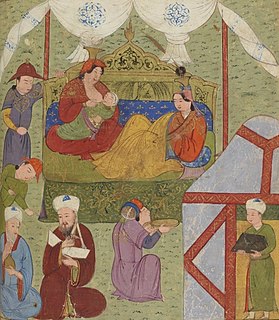 W
WThe history and culture of breastfeeding traces changing social, medical and legal attitudes to breastfeeding, the act of feeding a child breast milk directly from breast to mouth. Breastfeeding may be performed by the infant's mother or by a surrogate, typically called a wet nurse.
 W
WA human milk bank or breast milk bank is a service which collects, screens, processes, and dispenses by prescription human milk donated by nursing mothers who are not biologically related to the recipient infant. The optimum nutrition for newborn infants is breastfeeding, if possible, for the first year. Human milk banks offer a solution to the mothers that cannot supply their own breast milk to their child, for reasons such as a baby being at risk of getting diseases and infections from a mother with certain diseases, or when a child is hospitalized at birth due to very low birth weight, and the mother cannot provide her own milk during the extended stay for reasons such as living far from the hospital.
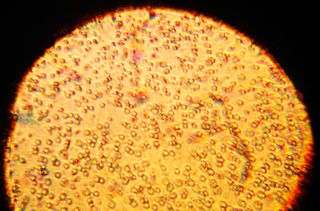 W
WHuman milk immunity refers to the protection provided by mother to infant via the biologically active components in human milk. Human milk was previously thought to only provide passive immunity primarily through Secretory IgA, but advances in technology have led to the identification of various immune-modulating components. Human milk constituents provide nutrition and protect the immunologically naive infant as well as regulate the infant's own immune development and growth.
 W
WHuman–animal breastfeeding has been practiced in many different cultures in many time periods. The practice of breastfeeding or suckling between humans and other species has gone in both directions: women sometimes breastfeed young animals, and animals are used to suckle babies and children. Animals were used as substitute wet nurses for infants, particularly after the rise of syphilis increased the health risks of wet nursing. Goats and donkeys were widely used to feed abandoned babies in foundling hospitals in 18th- and 19th-century Europe. Breastfeeding animals has also been practised, whether for health reasons – such as to toughen the nipples and improve the flow of milk – or for religious and cultural purposes. A wide variety of animals has been used for this purpose, including puppies, kittens, piglets and monkeys.
 W
WThe hypothalamic–pituitary–prolactin axis, also known as the hypothalamic–pituitary–mammary axis or hypothalamic–pituitary–breast axis, is a hypothalamic–pituitary axis which includes the secretion of prolactin from the lactotrophs of the pituitary gland into the circulation and the subsequent action of prolactin on tissues such as, particularly, the mammary glands or breasts. It is involved in lobuloalveolar maturation of the mammary glands during pregnancy and the induction and maintenance of lactation following parturition. Hormones that control the secretion of prolactin from the pituitary gland include dopamine, estradiol, progesterone, thyrotropin-releasing hormone (TRH), and vasoactive intestinal peptide (VIP).
 W
WInfant formula, baby formula or just formula or baby milk, infant milk or first milk, is a manufactured food designed and marketed for feeding to babies and infants under 12 months of age, usually prepared for bottle-feeding or cup-feeding from powder or liquid. The U.S. Federal Food, Drug, and Cosmetic Act (FFDCA) defines infant formula as "a food which purports to be or is represented for special dietary use solely as a food for infants by reason of its simulation of human milk or its suitability as a complete or partial substitute for human milk".
 W
WThe international breastfeeding symbol is a symbol that depicts a woman breastfeeding a baby. It was designed by Matt Daigle, a graphic artist and father, in response to a contest hosted by Mothering magazine. The winner was chosen in November 2006 out of a total of more than 500 entries. Daigle, who says his wife and son were the inspiration behind the symbol, released the copyright to the symbol to the public domain.
 W
WLactation describes the secretion of milk from the mammary glands and the period of time that a mother lactates to feed her young. The process naturally occurs with all post-pregnancy female mammals, although it predates mammals. In humans the process of feeding milk is also called breastfeeding or nursing. Newborn infants often produce some milk from their own breast tissue, known colloquially as witch's milk.
 W
WA lactation consultant is a health professional who specializes in the clinical management of breastfeeding. The International Board of Lactation Consultant Examiners (IBLCE) certifies lactation consultants who meet its criteria and have passed its exam.
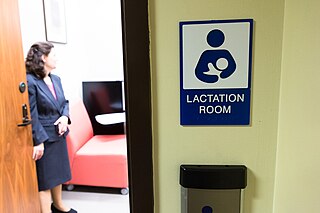 W
WLactation room is an American English term for a private space where a nursing mother can use a breast pump. The development is mostly confined to the United States, which is unique among developed countries in providing minimal maternity leave. Historian Jill Lepore argues that the "non-bathroom lactation room" and breast pumps generally are driven by corporate need for workers rather than mothers' wishes or babies' needs.
 W
WLactational amenorrhea, also called postpartum infertility, is the temporary postnatal infertility that occurs when a woman is amenorrheic and fully breastfeeding.
 W
WLatch refers to how the baby fastens onto the breast while breastfeeding. A good latch promotes high milk flow and minimizes nipple discomfort for the mother, whereas poor latch results in poor milk transfer to the baby and can quickly lead to sore and cracked nipples. In a good latch, both the nipple and a large portion of the areola are in the baby's mouth.
 W
WThe international breastfeeding community includes people who actively promote breastfeeding, teach breastfeeding, research breastfeeding and related health issues, and who write about breastfeeding and the ways it influences mothering, parenting and family life.
 W
WThe nipple is a raised region of tissue on the surface of the breast from which, in females, milk leaves the breast through the lactiferous ducts to feed an infant. The milk can flow through the nipple passively or it can be ejected by smooth muscle contractions that occur along the ductal system. The nipple is surrounded by the areola, which is often a darker color than the surrounding skin. A nipple is often called a teat when referring to non-humans. Nipple or teat can also be used to describe the flexible mouthpiece of a baby bottle. In humans, nipples of both males and females can be stimulated as part of sexual arousal. In many cultures, human female nipples are sexualized, or "regarded as sex objects and evaluated in terms of their physical characteristics and sexiness."
 W
WA nipple shield is a nipple-shaped sheath worn over the areola and nipple during breastfeeding. Modern nipple shields are made of soft, thin, flexible silicone and have holes at the end of the nipple section to allow the breast milk to pass through.
 W
WA nursing bra is a specialized brassiere that provides additional support to women who are lactating and permits comfortable breastfeeding without the need to remove the bra. This is accomplished by specially designed bra cups that include flaps which can be opened with one hand to expose the nipple. The flap is usually held closed with a simple clasp or hook.
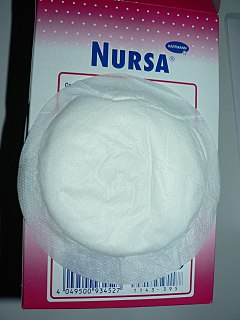 W
WA nursing pad is a cloth or disposable pad worn against the nipple and breast of a nursing mother to absorb any milk that may leak between feedings. It is inserted between the bra and the breast. Disposable pads are common and located easily online or in specialty stores. Reusable cloth pads can be washed and used over. These may be less expensive. Changing the pad when it is wet will keep the nipple clean and dry.
 W
WOxytocin (Oxt) is a peptide hormone and neuropeptide. It is normally produced in the hypothalamus and released by the posterior pituitary. It plays a role in social bonding, reproduction, childbirth, and the period after childbirth. Oxytocin is released into the bloodstream as a hormone in response to love and in labor. This helps with birth, bonding with the baby, and milk production.
 W
WPostpartum confinement refers to a traditional practice following childbirth. Those who follow these customs typically begin immediately after the birth, and the confinement lasts for a culturally variable length: typically for one month or 30 days, up to 40 days, two months or 100 days. This postnatal recuperation can include "traditional health beliefs, taboos, rituals, and proscriptions." The practice used to be known as "lying-in", which, as the term suggests, centres around bed rest. In some cultures it may be connected to taboos concerning impurity after childbirth.
 W
WA prolactin modulator is a drug which modulates the secretion of the pituitary hormone prolactin from the anterior pituitary gland. Prolactin inhibitors suppress and prolactin releasers induce the secretion of prolactin, respectively.
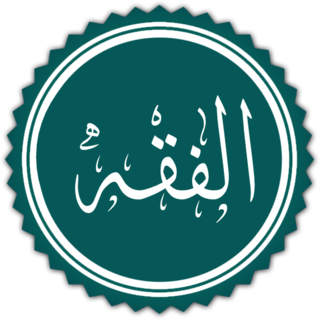 W
WRaḍāʿ or riḍāʿa is a technical term in Sunni Islamic jurisprudence (fiqh) meaning "the suckling which produces the legal impediment to marriage of foster-kinship", and refers to the fact that under Sunni jurispurdence, a wet nurse is considered related to the infant she nurses. The term derives from the infinitive noun of the Arabic word radiʿa or radaʿa. Often it is translated as "fosterage" or "milk kinship".
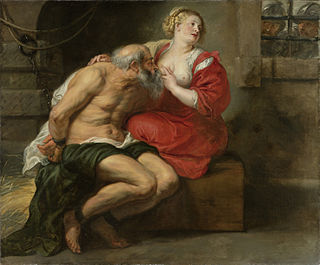 W
WRoman Charity is the exemplary story of a woman, Pero, who secretly breastfeeds her father, Cimon, after he is incarcerated and sentenced to death by starvation.
 W
WA supplemental nursing system (SNS), also known as a lactation aid, is a device that consists of a container and a capillary tube. It is used to provide additional nutrients to a baby whose mother has low milk supply. During breastfeeding, the end of the tube is placed alongside the mother's nipple so that both the tube and the breast are in the infant's mouth.
 W
WWeaning is the process of gradually introducing an infant human or another mammal to what will be its adult diet while withdrawing the supply of its mother's milk.
 W
WA wet nurse is a woman who breast feeds and cares for another's child. Wet nurses are employed if the mother dies, or if she is unable or elects not to nurse the child herself. Wet-nursed children may be known as "milk-siblings", and in some cultures the families are linked by a special relationship of milk kinship. Mothers who nurse each other's babies are engaging in a reciprocal act known as cross-nursing or co-nursing. Wetnursing existed in cultures around the world until the invention of reliable formula milk in the 20th century.
 W
WWorld Breastfeeding Week (WBW) is an annual celebration which is held every year from 1 to 7 August in more than 120 countries. According to the 26 August data of WBW website, 540 events have been held worldwide by more than 79 countries with 488 organizations and 406,620 participants for the World Breastfeeding Week 2010. See WBW pledges for the complete list.